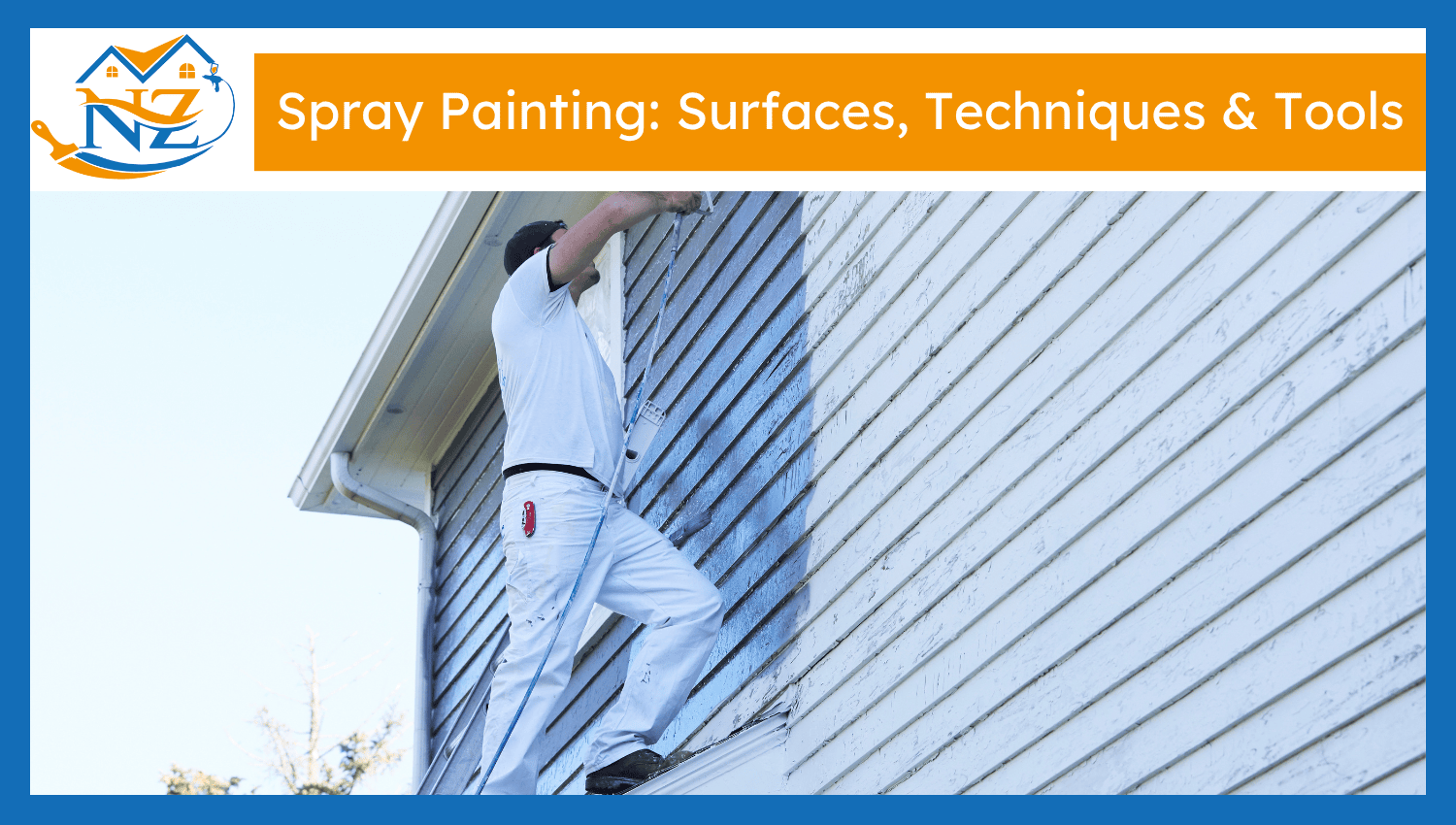

Spray painting is a process of applying water-based paints or enamels with the help of pressurised tools. It involves a spray gun, which is linked to an air compressor or high-pressure tank that pressurises paint through an adjustable nozzle. The nozzle has different spray patterns depending on the material surface and type. It is evenly applied, quick, and leaves few brush marks. It also increases protection against corrosion, particularly in metal substrates. It is effective when there is a need to cover a large or complex area with uniform, high-quality results in a shorter time.
The following are the 3 main types of spray painting:
Aerosol spray paint comes in a closed, pressurised can, which ejects paint in the form of a fine spray. It is used in small-scale projects, repairs, and craft work. It is pre-mixed paint and dries fast. It is portable and easy to use, but less controlling and not suited to large or professional uses.
High volume low pressure (HVLP) spray guns use low pressure and high volume of air to produce a controlled, soft spray. It minimises the amount of overspray, is more efficient at transferring paint, and can be used on fine detailed work. It is used in automotive, cabinetry, and furniture finishing. HVLP spray guns are more efficient with thin paints or coatings and need a constant supply of air, unlike heavy materials.
Airless spray systems use a small electrical motor to push paint through nozzles without mixing it with air. It forms a thick, even coat and is excellent on large areas such as walls, decks, or industrial machinery. They are effective with high-viscosity paints, and they cover quickly. They produce more overspray and require more safety precautions due to the high-pressure output and amount of paint.
Here are the 5 main spray painting techniques:
Keep the spray can or spray gun vertically and normal to the surface. An even spray pattern and coverage are achieved by a steady wrist and equal pressure. When the tool is tilted or angled, it leads to an uneven application and more product builds up on edges or corners.
Keep the distance between 6 to 12 inches away to apply an even coating. Spraying near creates drips, and spraying far creates dry and patchy finishes. The constant spray distance provides the appropriate atomization of the paint and saves material waste.
Apply a sweeping movement that is controlled either in a left-to-right direction. Start your movement before you pull the trigger and carry on above the surface before you release. To prevent any gaps and to apply a uniform coat, it is sufficient to overlap each pass by 50%.
Apply 2–3 light coats instead of one thick layer. Thin coatings minimize sagging, boiling, and cracking. A controlled layering method enhances paint adhesion, color depth, and surface uniformity, especially for high-gloss or protective finishes.
Wait 1 to 8 hours between coats, based on paint type and humidity. Allowing each coating to dry completely enhances sticking and prevents peeling. Multiple layers entrap wet paint, causing a bumpy texture or a weak finish.
Here are the 7 essential tools and materials needed for a clean, safe, and professional spray painting:
Small jobs and touch-ups are best done with spray paint cans, whereas larger areas and more control are achievable with a spray gun. These two tools produce a fine mist, which provides smooth and even applications on different materials.
Drop clothes or plastic sheeting is used to cover the surrounding area to prevent overspray. Covering floors, furniture, and surrounding items helps prevent paint stains. These materials keep the workspace clean and save time on cleanup after the job.
Painter’s tape gives nice, clean edges and covers the parts that you do not want to be painted. It applies easily and does not harm the surfaces, and it does not cause paint to bleed under the tape, giving clean lines and neat results.
Sandpaper or sanding blocks are applied to make the surface smooth to paint. The elimination of rough spots, flaking paint, or shiny finishes helps the adhesion of the paint and provides a smoother, more long-lasting finish.
Primer cleans the surface, seals the pores, and gives a better hold of the paint. It improves color coverage, stops bleeding through stains, and makes the final coat more durable. Apply primer to bare wood or metal, or to repaired places.
Paint fumes and particles are filtered by using a respirator or protective mask. Spray paints contain volatile chemicals, which can cause lung irritation. Proper respiratory protection is essential for safety, especially in enclosed or poorly ventilated spaces.
Skin and eyes are safeguarded with gloves and safety glasses against paint, chemicals, and overspray. Using them prevents irritation, allergic reactions, and accidental splashes during preparation or spraying. They are simple but essential things to ensure personal safety.